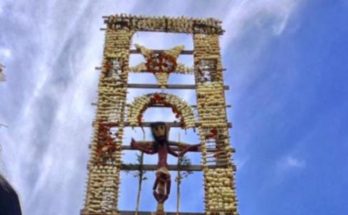By Arturo Morales Tirado
In Mexico’s Inland Frontier—generally, the north-central highlands—we have the privilege of living with and enjoying the biodiversity of at least four ecosystems, where birds are indicators of the region’s ecosystem health. For example, of the 395 species that exist in the state of Guanajuato, representing 34% of the bird species of Mexico, up to 125 of those have been observed around San Miguel de Allende—10.75% of the national total. Nationally, 32 of those species are at risk of extinction, and 25 of these live in one of the ecosystems of the Mexican Inland Frontier.
In the last 90 years, artificial, human-built, and non-natural ecosystems such as urban centers, agricultural and grazing land, and dams with reservoirs, have expanded and encroached on the natural ecosystems (containing oak forest, low succulent scrubland, wetlands, and gallery forests) of this land between volcanic Mesoamerica and the northern semi-desert to desert Aridoamerica. As members of these highly complex biological systems—with their complex interactions between living and non-living components—birds are exceptional, notable for their plumage, songs, and calls. Most of them fly and move quickly and over large areas. They are diverse in their habits, from their ways of feeding to reproduction and survival strategies, and are, therefore, indicators of the dynamic health of their habitat.
When you know and observe their behavior, our avian neighbors in San Miguel and its surroundings are amazing, beautiful, and wonderful, but, due to our excessive anthropocentrism, we are causing our biodiversity to disappear through this sixth world extinction we are experiencing. We human beings are the cause, and the effect manifests itself by modification or loss of habitat diversity. San Miguel and its surroundings are no exception.
One of the largest birds in our shared habitat is the great white heron (Andrea alba egretta), which nests in tall trees around the region’s wetlands and dams. Many of these trees, like ash trees (Fraxinus uhedi), are not typical of our ecosystems. The herons have selected the ash, introduced at least a century ago, for their nests. Today, in our urban ecosystem, the ash is spectacularly complemented by another exotic species: the jacaranda (Jacaranda mimosifolia), originally from El Gran Chaco in South America and introduced to Mexico some 120 years ago.
In the spring, great white herons are in the middle of the breeding and nesting season. The male, as a physical manifestation of courtship, extends part of his posterior feathers and produces long, open feathers. At the end of the 1800s, these feathers were highly valued by the manufacturers of women’s hats. The herons were hunted indiscriminately for these feathers, pushing naturalists from the United States to create the National Audubon Society in 1905 (in honor of John James Audubon). The first chapter outside the United States began its work in San Miguel in 1967 and was formalized in 1972. The chapter was promoted by, among others, Dotty Vidargas Birk and her mother, Lillia Ray.
The great white heron has a low level of threat of extinction; other species, however, have a high risk level. For instance, the red-tailed hawk (Buteo jamaicensis) that lives in our oak forests and ravines or the gallery forests along the waterways and wetlands is threatened.
One of the most threatened birds in the wetlands and willow groves is the migratory wood stork (Mycteria americana). Today, the species is doubly threatened around the Allende reservoir by contamination of the reservoir’s artificial ecosystem and infestation of the reservoir by water lily (Eichhornia sp.).
Other threatened birds in the Inland Frontier are black-capped vireo, black-polled yellowthroat, raft flycatcher, snowy plover, northern bittern, little bittern, white-tailed kite, aura eagle, golden eagle, peregrine falcon, Mexican falcon, creeping sparrowhawk, sparrowhawk, Cooper’s hawk, lesser black eagle, red and black eagle, white-tailed eagle, red-breasted eagle, dwarf vireo, Clarín goldfinch, spotted blackbird, Tolmie’s warbler, transvolcanic mask (Jay), Mexican duck, Moctezuma quail, and lesser grebe.
Due to the severity of human impact, it is urgent that we modify our habits—primarily our consumption—to preserve the wonderful birdlife of our shared habitat.




